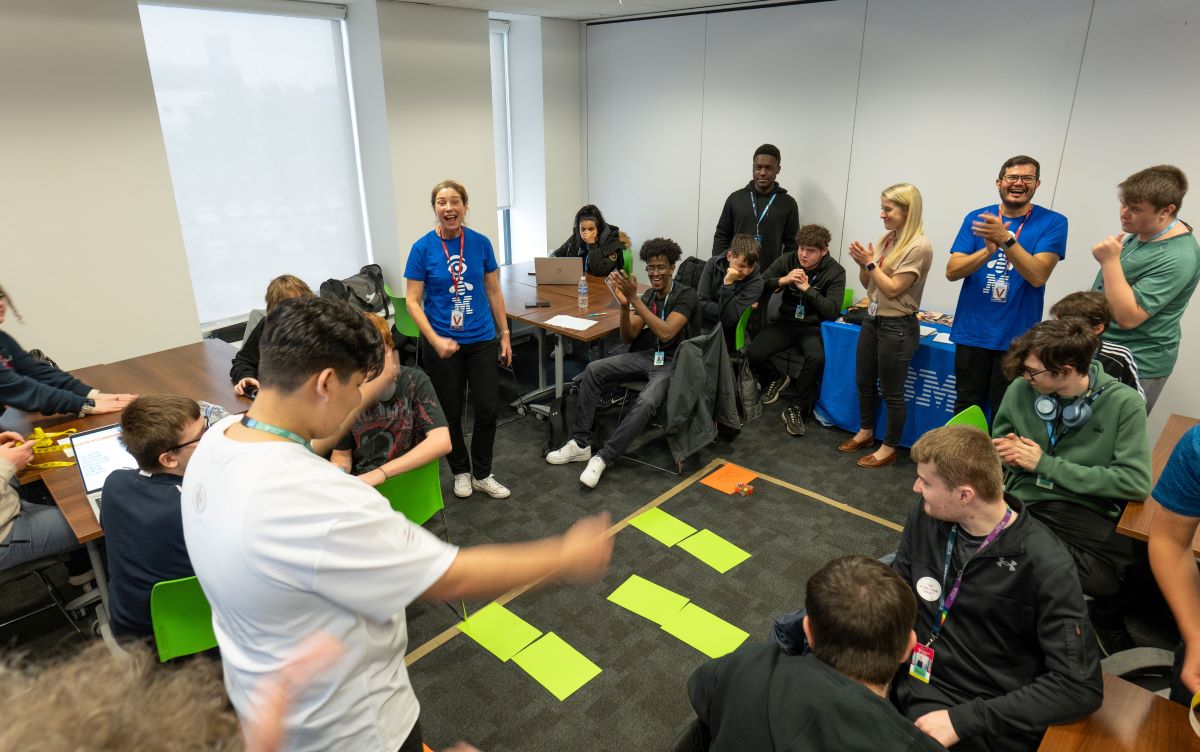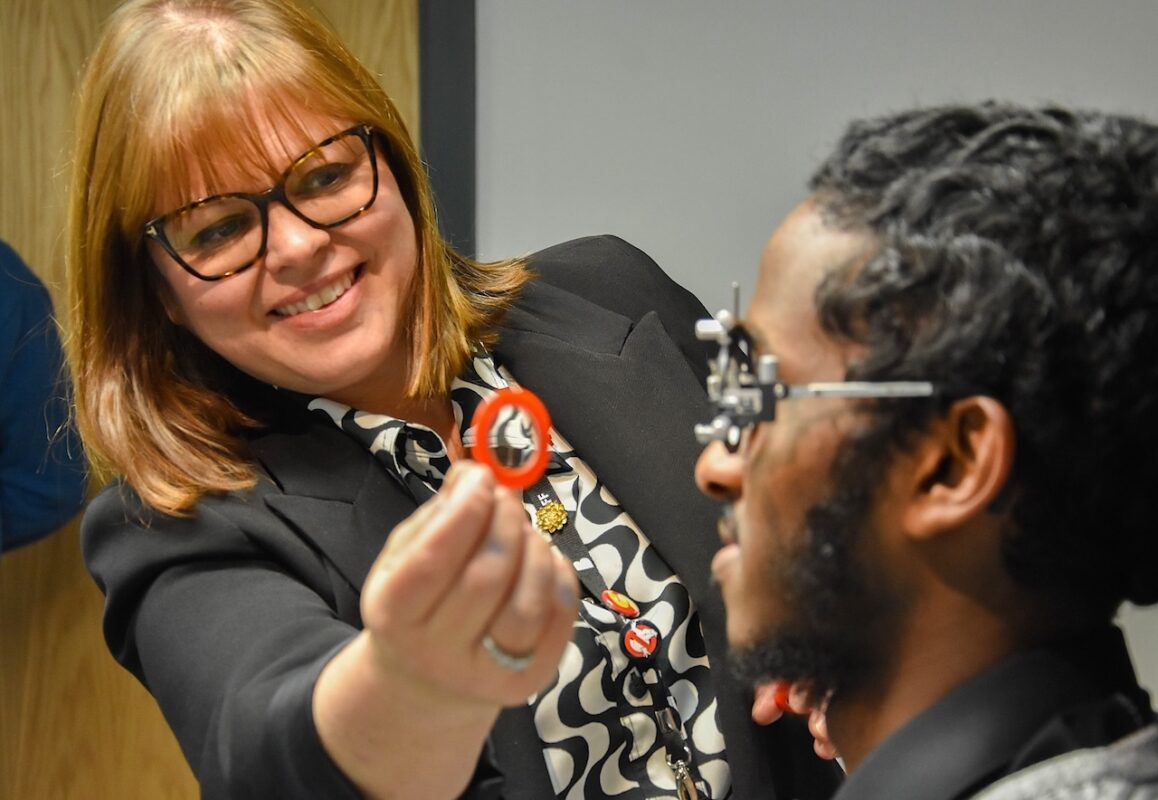Universities are powerful vehicles for social mobility, with less selective institutions contributing more

English universities ranked on their “Social Mobility Rate” – the least selective post-1992 universities come out on top
Universities are seen as crucial engines of social mobility, and perhaps with good reason.
Individuals eligible for Free School Meals (FSM) in year 11 who attended university are almost four times more likely to be amongst the highest 20% of earners at age 30 than those who did not, and around ten times more likely if they attended one of the four most selective universities in the country.
However, students from poor families are much less likely to go to university in the first place.
During the mid-2000s, just 16% of FSM students attended any university, compared to 75% of the privately educated. The gaps are even starker at the most selective institutions. For some of these, more than half of the student body at some of these institutions was privately educated, while fewer than 2% qualified for FSM when they were at school.
Today (24 Nov), in by far the most comprehensive exercise of this nature to have happened in the UK, the Institute for Fiscal Studies (IFS) is publishing a new report, in partnership with the Sutton Trust, that ranks universities in terms of their contributions to social mobility.
It looks both at the share of students from low-income backgrounds at the university, and whether those students have moved up to the top of the income ladder.
Specifically, for each university it calculates a “mobility rate”, which shows the proportion of students at the university who were FSM eligible and are amongst the top 20% of earners at age 30.
Its key findings are:
- The average mobility rate across all universities based on those who entered in the mid-2000s is 1.3%. This means just over one in every 100 graduates was eligible for FSM when they were at school and is in the top 20% of earnings at age 30. This compares to the 4.4 students in every 100 graduates we would get if there were equal access to university for all income groups and undergraduates from all income backgrounds had the same chance of making it into the top 20%.
- Many of the most selective and prestigious universities do not do well on this ranking. While students from low-income families who go to Russell Group institutions do very well in the labour market, these universities admit very few FSM students, leading to an average mobility rate of just 1%.
| University type | FSM students | FSM students reaching top 20% | Social Mobility Rate |
|---|---|---|---|
| Most selective Russell | 1.7% | 59.0% | 1.0% |
| Russell Group | 2.6% | 38.4% | 1.0% |
| Pre-1992 universities | 5.3% | 27.8% | 1.5% |
| Post-1992 (more selective) | 4.9% | 17.7% | 0.9% |
| Post-1992 (least selective) | 10.7% | 18.5% | 2.0% |
| All | 5.6% | 22.3% | 1.3% |
- Overall, the least selective post-1992 institutions do best, often combining relatively high access rates of FSM students (more than one in every ten students) with slightly below average rates of reaching the top 20%. More selective post-1992 have the lowest mobility rates. They take in fewer FSM students than pre-1992 universities, but have far worse labour market outcomes.
- There is a lot of variation within these broad university groups, with institutions based in London doing particularly well and making up the entire top 10. They take on high numbers of disadvantaged students and send a significant share of them to the top of the earnings distribution. Queen Mary University of London (QMUL) – the only Russell Group university in the top 10 – is the highest ranked university with 6.8% of its graduates coming from FSM backgrounds and reaching the top 20% of the income distribution.
- Bradford, Aston, Newman University (Birmingham), Birmingham City and Liverpool John Moores are the highest mobility institutions which are not based in or around London.
| Rank | University | FSM students | FSM students reaching top 20% | Social Mobility Rate |
|---|---|---|---|---|
| Top five for mobility | ||||
| 1 | QMUL | 16.1% | 42.2% | 6.8% |
| 2 | Westminster | 22.5% | 25.0% | 5.6% |
| 3 | City | 15.0% | 35.1% | 5.3% |
| 4 | Greenwich | 20.0% | 24.8% | 5.0% |
| 5 | London South Bank | 25.7% | 18.0% | 4.6% |
| Top five outside London | ||||
| 13 | Bradford | 20.3% | 16.4% | 3.3% |
| 14 | Aston | 10.4% | 31.4% | 3.3% |
| 25 | Newman | 13.9% | 13.2% | 1.8% |
| 27 | Birmingham City | 12.6% | 13.5% | 1.7% |
| 28 | Liverpool John Moores | 10.0% | 16.9% | 1.7% |
- The high ranking of the London universities is only partially explained by the fact that many of the graduates from London universities go on to live and work in the capital, where graduate wages are high compared to other parts of the country.
- The large number of students from low-income families with good prior attainment in the London area is likely to be an important factor in the high access rates of London institutions, as is the high share of non-white students, who are more likely to attend university.
The reports’ other findings include:
- There is a low correlation between mobility rates and the average earnings returnsfor each university estimated in previous research. Universities with the best average earnings returns often have poor access rates, resulting in low mobility rates. Many of the highest mobility rate institutions have low earnings returns.
- Pharmacology, computing and law are the best performing subjects in terms of mobility. Pharmacology is the standout performer with a mobility rate three times the average.
- There is a lot of variation in mobility within universities across the subjects offered. Most universities with low overall mobility have some degree courses with high mobility rates.
- Access to university for FSM students has improved, but slowly. The average mobility rate of 1.3% for the mid-2000s cohorts is only projected to have increased to 1.6% now. This remains well below the 4.4% benchmark, suggesting that there is much progress still to be made.
Sector Response

UCU general secretary Jo Grady said:
‘This report shows how crucial widening access has been for those from communities traditionally less likely to go university. The new Secretary of State for Education needs to read it carefully and take stock of the huge contribution universities, especially those that are less selective, make towards social mobility.
‘Those who work in our universities care deeply about their students, regularly going above and beyond to help them achieve the outcomes highlighted in this report, and their impact should not be overlooked. Sadly, rather than demonstrating they value their staff university employers have instead chosen to regularly attack their pay, pensions and working conditions, leaving them demoralised and running on empty. Vice-chancellors urgently need to change course to ensure universities continue to be a force for social good.
‘It is clear that much work is still needed to ensure that students from all backgrounds have equal access to different courses and institutions. This is further evidence of the need for a proper overhaul of university admissions to ensure that inaccurate predicted grades don’t determine life chances.
‘The findings should also sound a cautionary note in relation to the shift towards T-levels – stripping away funding for tried and tested applied general qualifications such as BTECs will only serve to reduce student choice and limit access.
‘The report shows that London universities are particularly good at supporting those from disadvantaged backgrounds, and adds further evidence that the decision to scrap London weighting was a ‘levelling down’ of social aspiration and must be reversed.’

Dr Tim Bradshaw, CEO of the Russell Group, said:
“Our universities are working hard to ensure all students have the opportunity to access the benefits of an excellent higher education in the UK. The proportion of 18-year-olds from some of the most disadvantaged areas entering English Russell Group universities has increased every year for the last seven years and our members have set ambitious targets to build on that progress.
“Equally important is the support students from under-represented backgrounds receive once they get to university so they can succeed in higher education and later in life. The priority our members give to this is reflected in the levels of continuation rates, degree attainment and future earnings for under-represented students attending our universities and we are pleased to see the Government and Office for Students’ new Director of Fair Access and Participation underline the importance of this work. Our universities look forward to building on their existing work with schools and colleges, offering a range of options to young people, including degree apprenticeships, and supporting them through university to graduation and beyond.
“Breaking down the barriers created by educational inequality that start early in life is not a job for universities alone. Alongside ambitious efforts from universities we have also recommended a new national strategy to join up efforts by schools, businesses, Government and others to address disadvantage throughout the education system.”

Kate Green MP, Labour’s Shadow Education Secretary, said:
“Universities should be engines of social mobility but across the country far too many young people are being held back from accessing the world-class education these institutions have to offer.
“Under the Conservatives the increase in students on free school meals attending university has stalled, and Ministers are sitting on their hands failing to drive forward reform to university admissions that Labour has been calling for.
“Failure to open these doors wastes individual talent and huge future potential.”

Sir Peter Lampl, founder and chair of the Sutton Trust and chair of the Education Endowment Foundation, said:
“Universities are among the most powerful engines for social mobility that we have. Today’s ground-breaking new research confirms the role they play in enabling disadvantaged young people into well-paying and rewarding careers. In particular, less selective universities are really doing the heavy lifting to promote social mobility. However, the findings also highlight significant challenges.
“Disadvantaged students who go to the most selective universities are more likely to become socially mobile. But while it’s clear that significant progress has been made on access in the past decade, there remains work to be done to further open up these institutions. Today’s research is a reminder of why access and outreach, as well as progress at university, is so important for social mobility and the government’s levelling up agenda.”
Elaine Drayton, a Research Economist at the IFS and author of the report said:
“These results document an important contribution that universities make to society beyond average earnings returns. Many low selectivity institutions offer low earnings returns on average but make a positive contribution to social mobility. This highlights the importance of using other metrics in conjunction with earnings returns when determining value in higher education.”
Laura van der Erve, a Senior Research Economist at the IFS and author of the report said:
“Students from low-income families who study at the most selective universities do very well in the labour market. The problem is that very few low-income children make it onto those courses in the first place. In the mid-2000s, children on FSM were nearly 100 times less likely to attend Oxford or Cambridge, and around 25 times less likely to do a medicine degree, than their privately educated peers. And despite a lot of resources being directed at this issue, progress over the last 15 years or so has been slow.”











Responses